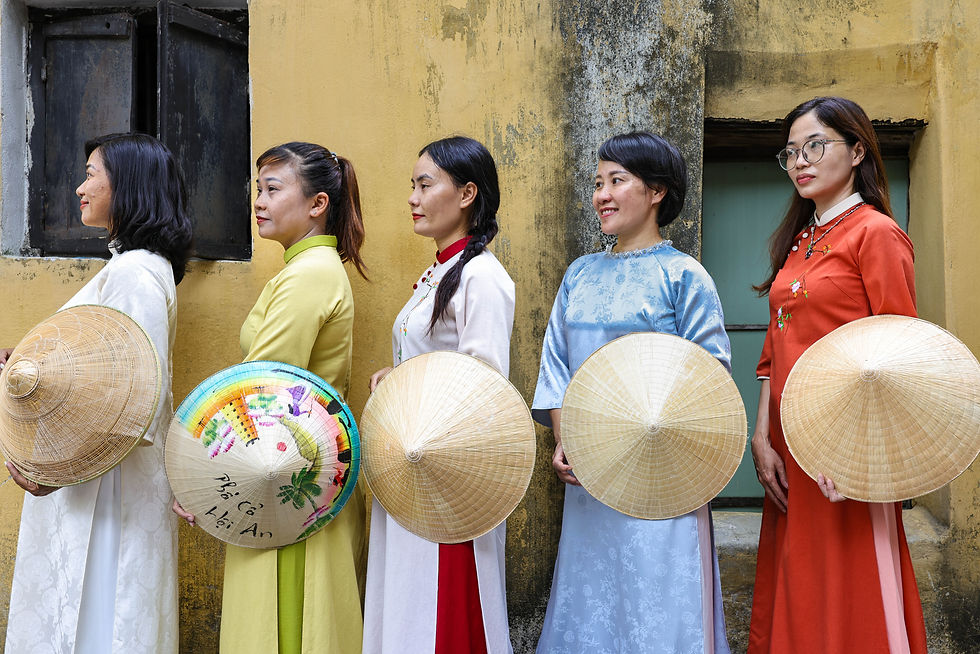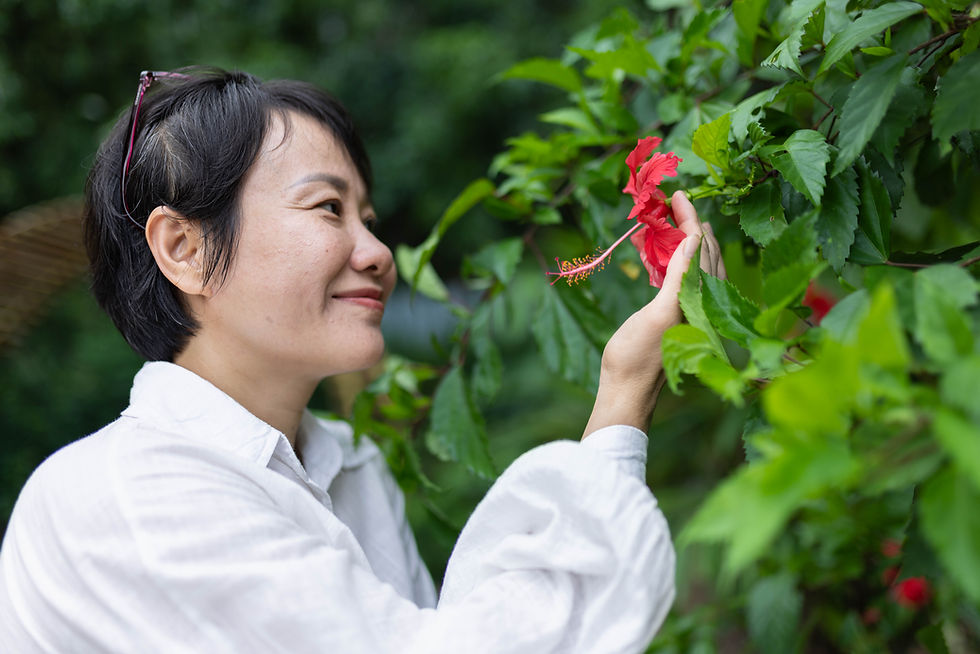A Different Shade of Shame
- warmmarisa
- Aug 4
- 4 min read
Marisa Warm

“I Want to Keep the Baby. It Is My Choice.”
There’s something you can’t see walking down the streets of a Vietnamese city. It hides behind the faces of women selling food, behind the shy smiles of masseuses, behind the laughter of women drinking beer in tiny plastic chairs at open-air bars.
It’s not a taboo subject, exactly. It’s something far more persistent: shame.
In Vietnam, as in many other societies, shame haunts single mothers. It whispers through alleyways and into homes, into job interviews, into maternity wards. And yet, despite that pressure, women like Hong Tang are standing tall — choosing motherhood, choosing visibility, and choosing to fight for others who are afraid.

“When I saw the two red notes on that, I was so happy,” Tang said. “I knew I would keep the baby. But over time, I started to fret — not because of the baby, and not because I felt sorry for myself. I felt stressed by society. How they behaved. How they treated me. And this isn’t in a small town. This is Hanoi.”
26-year-old Hong Tang had her first child. She was born in the Vietnamese countryside, studied English, moved to the city, and eventually earned a master’s degree. When she became pregnant, people didn’t whisper — they stared.
“It only happened to the dirty girl, the naughty girl, the uneducated girl,” she said. “It's not for a girl who has a masters degree, who travels around the world, who all of that. So it's very shocking for everybody. That's the reason why the abortion rate in Vietnam is very, very, very high.”
Vietnam has one of the highest abortion rates in the world, according to the United Nations Population Fund. Women are legally allowed to choose, but many report choosing abortion not because they want to — but because of societal pressure.
But shame isn’t just a Vietnamese story — it’s a global one. Around the world, women are shamed for choices that involve their own bodies. In Ireland, women fought for decades against restrictive abortion laws rooted in Catholicism. In the United States, reproductive rights remain at the center of political and moral debate. In India, single mothers face social exile. In parts of Latin America, pregnant teens are cast out of schools and homes.
Whether it’s the decision to parent or not, to breastfeed or bottle-feed, to wear what they want or to simply exist outside traditional family structures — women’s bodies are often treated like public property, open to scrutiny and judgment.
What Hong Tang faces in Hanoi — the staring, the gossip, the assumptions — echoes across continents. But it’s also part of something older and more embedded: a global culture that expects women to seek permission before making choices about their own lives.
After her decision to keep her baby, Tang built a community. Eight years later, she founded “Catalyst for Change,” an organization that supports single mothers across Vietnam. It provides mental health services, vocational training, emergency funding, and even basic supplies like school uniforms and hospital fees. The goal is not just survival — it’s dignity, healing, and long-term independence.

For a time, Catalyst for Change also ran a housing program for victims of domestic violence. But Tang was attacked by an abuser who tracked down his partner. When she reported it to the police, their response was chilling.
“And I report to the police, but it's none of their business,” she said. “And then they even told us that I actually don't have the right, you know, to do that, like it’s hurting people in the house...”
Without government or legal support, Tang presses on. Her team helps as many as they can — but there are over 275,000 single mothers in her community, and the stigma still looms.
“In stigma, you cannot change someone's life, or even if you change someone's message and equip them with the necessary skill, the society doesn't accept them,” she said. “They still cannot handle the thing. For example, me, as I grow up, let's say very clever and speak English. Have a master degrees. Have very good job. I'm hard working. I have shared disciplines and everything, and I made a mistake and became pregnant without marriage. It's very easy for me to search, take an abortion, right? However, I want to keep the baby.”

The root of this resistance lies in cultural tradition, particularly Confucianism, which continues to shape both Vietnamese politics and values.
“Confucianism is half religion, half government,” Tang explains. “It teaches that a woman must obey her father before marriage, her husband after marriage, and her son after her husband dies. That’s very hard to change.”
Indeed, the oppression of women in Vietnam is not loud or always visible — it’s quiet, institutional, inherited. But Tang believes change is possible, if it starts young. Her dream is to build a physical space and online platform where women can:
· Receive mental health support
· Learn financial skills
· Find safe community
· Participate in theater workshops to share their stories
She needs help. Tang is looking for fundraisers, donors, educators, and actors who can help make this space real — and sustainable. She’s already built a grassroots movement: it started with a blog post about her struggles as a single mother.
“Because I was so lonely. I was so depressed,” she said. “So I write the blog, and then it call out for all the women in the same situation in that one night, like 1000 people message and became friends, and I created and shaped the community for me.”
What’s invisible on the streets of Da Nang is becoming more visible online, in classrooms, in safe houses. The ripple is beginning.
And it started with one woman, who said no to shame.
Marisa Warm Instagram: mwarm.photopgraphy
catalyst for change website: www.catalystforchangevietnam.com
facebook: Catalyst for Change Vietnam - C4C


































Comments